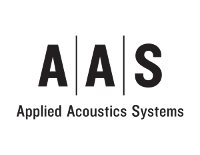 Applied Acoustics Systems, kurz AAS, haben die Version 2 ihrer String Studio Software vorgestellt. Es ist schon einige Zeit her, dass ich auf die Version 1 gestossen bin. Damals suchte ich eine virtuelle Harfe für einen Song. Nun also die Nachfolgeversion, welche 64 BIT Unterstützung und einige andere Veränderungen mitbringt. Hier die Pressemitteilung:
Applied Acoustics Systems, kurz AAS, haben die Version 2 ihrer String Studio Software vorgestellt. Es ist schon einige Zeit her, dass ich auf die Version 1 gestossen bin. Damals suchte ich eine virtuelle Harfe für einen Song. Nun also die Nachfolgeversion, welche 64 BIT Unterstützung und einige andere Veränderungen mitbringt. Hier die Pressemitteilung:
Applied Acoustics Systems (AAS) is proud to announce availability of String Studio VS-2 for Mac OS X (10.6 or later) and Windows (XP, Vista, 7, or 8) — an updated 64-bit (AAX-, AU-, and VST-compatible) version of its original String Studio VS-1 string modelling synthesizer plug-in released to critical acclaim almost a decade ago, dispensing with the traditional synthesizer audio pathway of oscillator, filter, and envelope elements in favour of real-life string instrument components — as of June 17…
String Studio VS-2 is so much more than a routine update of its predecessor, however. Here AAS has successfully streamlined the String Studio concept and brought it kicking and screaming to a whole new level — one that will forever change both listener and player’s perspective on strings. Who better, then, to introduce that streamlined String Studio concept than Applied Acoustics Systems President and Chief Executive Officer Marc-Pierre Verge: “Strings are the basis of so many musical instruments. They can be plucked, bowed, or hit, and interact with fingers, frets, dampers, and soundboards to produce a huge range of sounds. With String Studio VS-2, we have expanded these possibilities with filters, effects, and other regular synth features. You will be amazed how far you can get with a string!”
So what’s new, exactly? Well, why don’t we start on the surface before digging deeper? Redesigned from the ground up, the new interface now divides String Studio VS-2 into three panels: Play presents shortcuts to the performance and effects parameters, including bypass switches for quick edits, as well as a genuinely apt Arpeggiator — offering various synchronisation resolutions, playing algorithms, and rhythmic patterns that will spruce up any chord progressions into percolating melodies or pulsing sequences; Edit lets users tweak and create sounds by cleverly combining innovative acoustic modelling parameters and classic synth features in a unique way — be inspired by the new sonic possibilities while feeling at ease with the familiar approach to sound design; while FX adds all-new Equalizer and Compressor modules — perfect for adding punch and definition to any sound so it cuts through any dense mix or stage setup, as well as an overhauled, reinvigorated and polished multi-effects processor featuring AAS’ best-sounding chorus, delay, phaser, flanger, distortion, notch filter, wah-wah, and reverb to date — perfect for adding a final polished, professional- sounding sheen to whatever physically modelled string sounds you can come up with!
But beyond those three attractive and user-friendly front panels awaits an array of other new features. For starters, structured organisation, backup, and sharing of sounds has never been easier, thanks to String Studio VS-2’s Bank and Program management system! Speaking of sounds, the totally refreshed factory library has well over 600 production-ready sounds already classified across 11 categories — everything needed to create all the parts of any electronic production, including a collection of 50 inspiring signature presets by producer Sean Divine — for fast and intuitive investigation prior to digging deeper when moving on to solo sonic excursions. Seasoned String Studio VS-1 users, of course, can simply drop exported presets into String Studio VS-2’s Bank folder to convert them for continued usage — no need to leave anything behind, while the more adventurous sound designers out there will welcome Scala scale file format support for microtonal music-making — why stick to the chromatic scale if you don’t have to? And speaking of experimenting with the synth’s supremely powerful parameters, a new output limiter prudently protects ears and monitors and also ensures distortion-free dynamics at all times — thoughtful touch, surely?
For sure, String Studio VS-2 is packed with premium performance features, including realtime control over any parameters via MIDI controller knobs, faders, and switches; MIDI clock, tap, and host tempo synchronisation for effects and modulations; and relaxed editing with unlimited undo/redo capability. Combine these with the benefits of physical modelling — super-smooth dynamics with no velocity layers, sound manipulation at the source core, extremely fast preset loading times, and small memory footprint, for example — and what have you got? A new breed of synthesizer, that’s what!
Just ask Brazilian keyboard virtuoso Thiago Pinheiro: “Strings can be played in so many different ways. They can be played with a finger or a pick for plucked sounds, bowed for sustained sounds, or even hammered for a percussion- or keyboard-like sound. Strings can be thick or thin, and even the position you play them makes a huge difference in terms of sound. String Studio uses physical modelling to recreate the interaction of strings, and adds to that with filter, LFO, arpeggiator, full set of effects, and more. It is very expressive to the touch and feels more like an acoustic instrument — perfect for studio and stage. String Studio can take your creativity to the next level. It can create a vast number of different sounds, so, now I can only ask you: how crazy can you go with the sound of a string?”
So what are you waiting for? Why not take your creativity to the next level with String Studio VS-2? With its unique blend of acoustic modelling and regular synth features, only you can answer the question: how crazy can you go with a string?
Hier ein Video zur Software:
Weitere Informationen gibt es hier: Link
